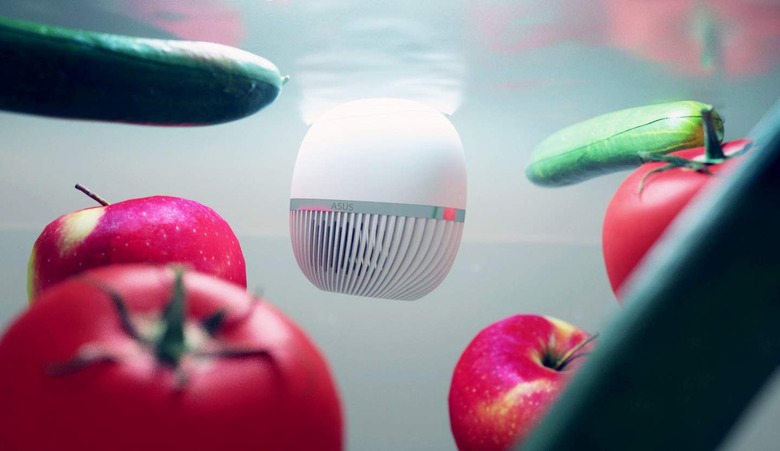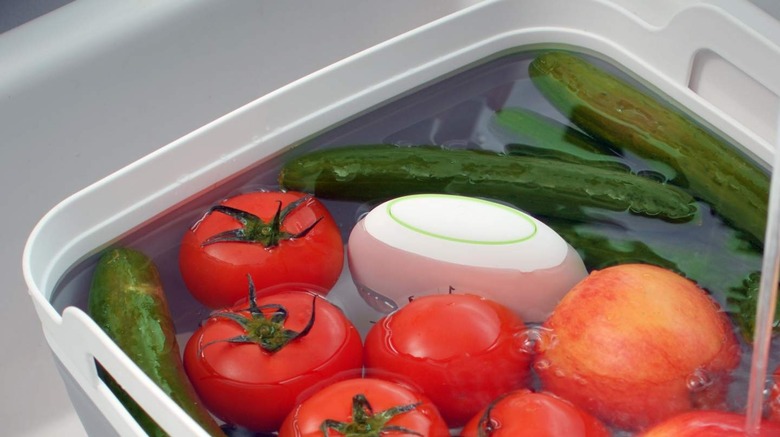Sensible ASUS Made An Absolutely Unexpected Kitchen Gadget
There's no shortage of IoT devices with niche uses out there, but today ASUS of all companies is launching one of the most intriguing ones we've seen yet. The ASUS PureGo PD100 is a new smart device that can help you determine when your fruits and vegetables are well-cleaned and ready to eat. Not only that, but ASUS says it can also help you develop better fruit and vegetable washing habits over time.
What does the ASUS PureGo PD100 do?
Proper fruit and vegetable washing methods may not be a pressing issue to most outside of professional kitchens, but with the PD100, ASUS is making the case that it should be. By submerging the PureGo PD100 into water with the fruits and vegetables in question, the device can tell you if they're clean and ready for consumption or if they need more washing.

To do this, the PureGo uses an optical sensor that detects pesticides and other residues in the water. The idea seems to be that vegetables and fruits soaking in a bath will leech these unpalatable things, therefore giving the sensor impurities to detect. The optical sensor is protected by a finned filter, and it uses "dynamic algorithms" to determine that food is safe to eat.
It seems pretty straightforward, though, in the fine print, ASUS says that the PureGo can "detect around 70%" of the pesticides used in the US as of 2020, so it may not be an entirely foolproof method of detection in that regard. It also can't accurately test a handful of fruits and vegetables, including Okinawa spinach, red amaranth, strawberry, mushrooms, cloud ear fungus, seaweed, and enoki mushrooms, but it sounds like everything else will return accurate test results.
How to use the ASUS PureGo PD100
Using the PureGo seems like an easy process. First, ASUS says users will need to wash their fruits and vegetables as they usually do before allowing them to soak in a bath of water for 2-3 minutes. While they're soaking, pesticides and other residues will begin to dissolve. Once soaking is complete, place the PureGo in the bath and use running water to rinse the fruits and vegetables. PureGo will then detect impurities and give a readout using its indicator ring.

If the indicator ring turns green, that means your food is ready to eat, while red or orange means there are still impurities present and you'll need to repeat the soaking and testing phases again. ASUS has also put together a PureGo app that can record historical data on your testing, which can potentially help users improve their food cleaning habits.
At the end of it all, it sounds like the PureGo could be a useful device if you worry that you aren't cleaning your fruits and vegetables enough before eating them, but that peace of mind comes at a pretty steep price: $199.99. If that price tag isn't enough to dissuade your purchase and you live in North America, you can find the PureGo on ASUS's website beginning today.
